Email inboxes are powerful tools for nonprofit organizations to drive action, inspire donations, and build lasting relationships with supporters. Nonprofit email marketing plays a crucial role in keeping your audience informed and engaged, but many nonprofits struggle to get their messages noticed. With so many emails flooding inboxes, it can be challenging to stand out and connect with supporters effectively.
This guide will help you break through the noise and create impactful emails that resonate with your audience. Let’s dive in!
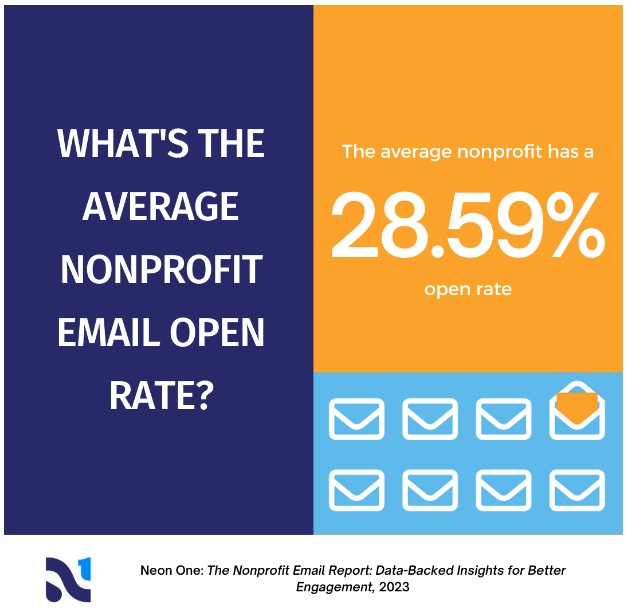
What is Nonprofit Email Marketing?
Nonprofit email marketing is all about using emails to connect with your supporters, donors, and volunteers. It’s not just sending out newsletters—it’s about sharing your mission, inspiring donations, and building long-term relationships.
Through personalized, targeted campaigns, you can keep your audience engaged and informed, while also driving crucial actions like volunteering or donating. Think of it as a direct line of communication between your nonprofit and the people who care about your cause!
5 Reasons Why Email Marketing is Necessary for Nonprofits
Email marketing is a must-have for nonprofits because it allows you to stay in touch with your supporters and make a real impact with minimal cost. Whether your objective is to raise awareness for your campaigns or drive donations, email remains one of the most effective ways to engage your audience.
Here are five powerful reasons why it’s essential:
- Cost-effective and high ROI: Email marketing gives nonprofits a massive bang for their buck. With every $1 spent, the ROI can go as high as $40. It’s a low-cost way to maintain ongoing communication without the expenses of print or direct mail.
- Personalization boosts engagement: Unlike social media posts that cater to a broad audience, email marketing allows you to personalize messages based on your donor behavior, preferences, and past interactions. Personalization can increase email open rates by as much as 26%. By tailoring your message to individual supporters, you’re more likely to keep them engaged and active.
- Strengthens donor relationships: Email is a fantastic tool for keeping donors in the loop about your nonprofit’s impact. Sending regular updates, thank-you notes, and success stories helps maintain a strong, personal connection with your supporters. This ongoing communication builds trust and loyalty, which is key to turning one-time donors into long-term supporters.
- urages regular donations: Sending out targeted email campaigns, especially around key fundraising events or during giving seasons, helps nonprofits stay top-of-mind for their audience. Statistics show that nonprofits raise $90 for every 1,000 fundraising emails sent. With the right message and timing, your email could be the nudge someone needs to donate again.
- Keeps supporters informed and involved: Regular email newsletters and updates ensure that your supporters always know what’s happening within your organization. Be it event invitations, progress reports, or volunteer opportunities, email keeps your audience informed and ready to take action.
Each of these reasons shows why email marketing is such a critical tool for nonprofits—it’s affordable, personalized, and builds lasting relationships that translate into action and support!
7 Best Nonprofit Email Marketing Best Practices to Follow
Email marketing can be a game-changer for nonprofits, but to truly maximize its impact, you need to follow some proven best practices. Here are seven best practices to follow:
1. Segment Your Mailing List
Segmented email campaigns have shown the potential to result in a 760% increase in revenue. But why is segmentation crucial?
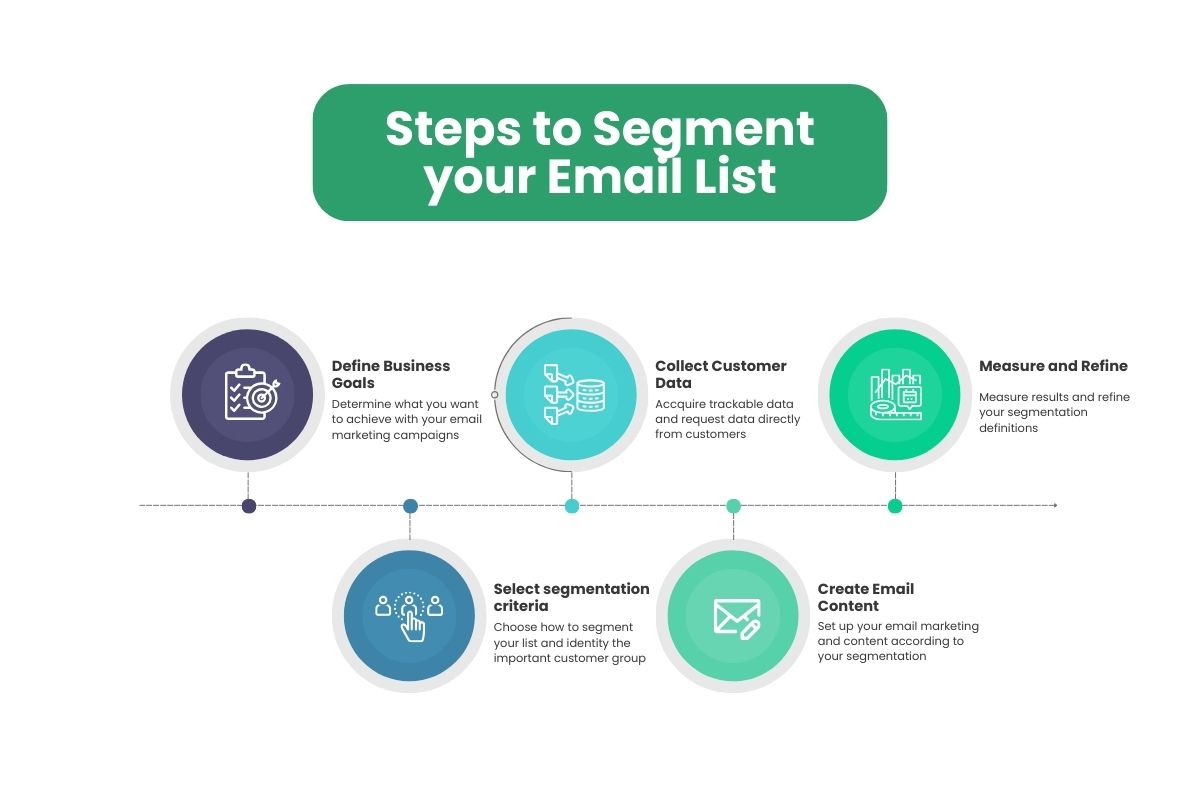
Because not all donors and supporters are the same—each group has different motivations, engagement levels, and interests. By dividing your audience into smaller groups based on behavior, donation history, or interests, you can send highly targeted messages that resonate with each individual.
For example, if you run a nonprofit that supports education, you might have groups of people who are teachers, donors, and volunteers. Sending a generic email about donations might not resonate with volunteers as much as it would with donors. But if you send volunteers an email with opportunities to help in schools, you’re more likely to get a response.
Segmentation can be based on several factors:
- Donation frequency: Create segments for one-time donors, recurring donors, and lapsed donors.
- Event participation: Segment based on who attends events and who doesn’t.
- Engagement level: Separate those who open every email from those who rarely engage.
This approach increases engagement and also builds stronger relationships with your supporters because they feel understood and valued.
2. Personalize Your Emails
Personalized content cuts through the noise and drives engagement. Personalization goes beyond just using a recipient’s first name—it’s about tailoring the experience to each individual.
One of the easiest ways to personalize your emails is by leveraging the data you already have. For instance, if a donor has contributed to a specific cause or event in the past, acknowledge that in your email. Instead of a generic “Thank you for your support,” say something like, “Thank you for your generous donation to support children’s education last year.” This immediately makes the email feel more personal and connected to the recipient’s actions.
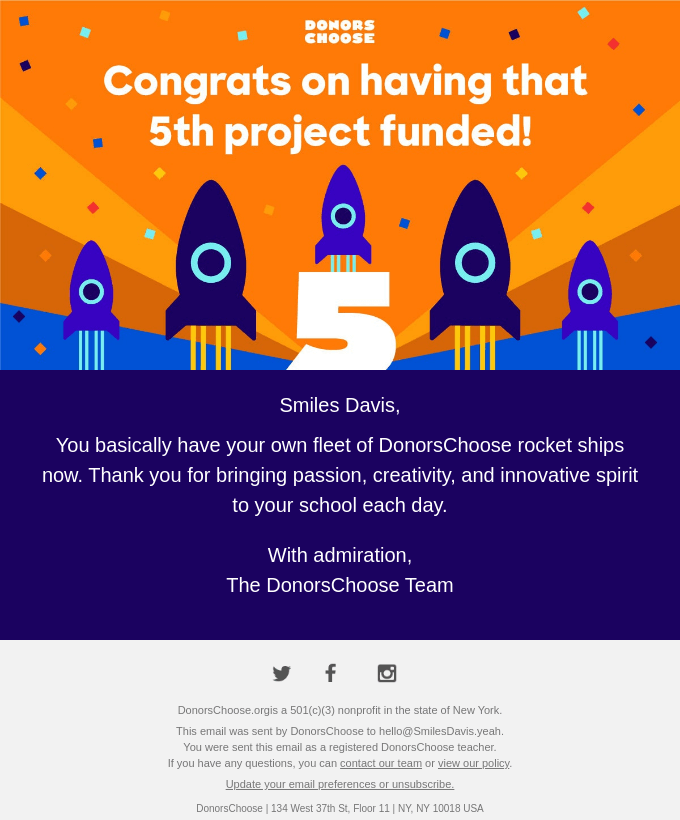
Another way to personalize is by sending birthday or anniversary emails, which have a 481% higher transaction rate. Simple gestures like “Happy Birthday” can increase engagement and even encourage donations.
Also, personalization doesn’t stop with donor history—use segmentation (discussed in the 1st pointer) to personalize based on location, interests, or engagement levels. For example, promote local events or causes aligned with their values to boost relevance and support.
3. Optimize for Mobile Devices
46% of all emails are opened on mobile devices, and if an email isn’t mobile-friendly, it’s likely to be deleted in less than three seconds. That’s right, three seconds!
It’s easy to see why this is crucial—people are checking emails on the go while commuting or even during a quick break, and if your email doesn’t look good or load properly, you’ve already lost their attention.
Now, let’s break down how you can optimize your nonprofit email marketing messages for mobile:
- Use a responsive design: Ensure your email layout adjusts automatically for different screen sizes.
- Keep your text concise: Mobile users scan quickly, so break up large paragraphs and stick to short, punchy sentences.
- Use large, tappable buttons: Replace text links with large, clear buttons that are easy to tap on small screens.
- Compress images for fast loading: Large images can slow down your email load time, which can frustrate mobile users. Always optimize and compress images before adding them.
- Test on multiple devices: Preview how your email looks on both mobile and desktop, and always test it before sending to ensure it’s easy to navigate on all devices.
By following these simple steps, your emails will be more likely to engage readers on mobile, reducing bounce rates and keeping your audience engaged wherever they are.
4. Craft Compelling Subject Lines
Your subject line determines whether your email gets opened or ignored—33% of recipients open emails based on the subject line alone. That’s why crafting a strong subject line is so important for nonprofits looking to increase engagement.
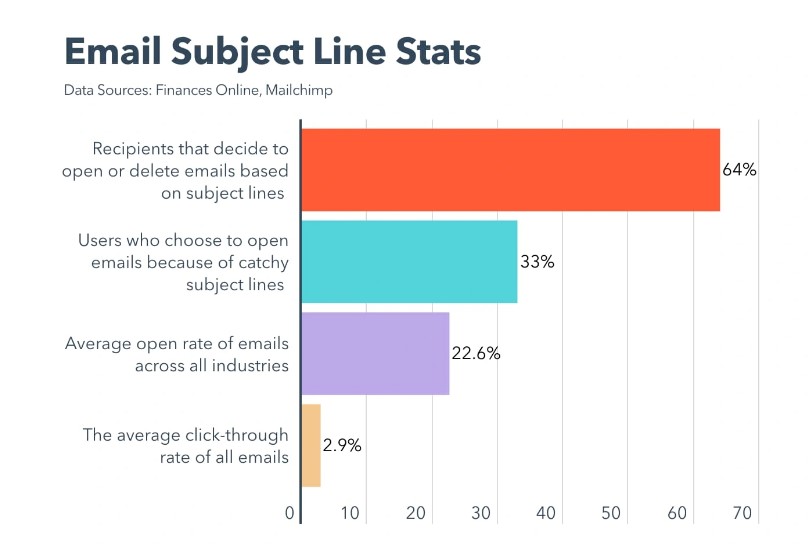
To boost engagement, create short, clear, and direct subject lines between 6-10 words, which typically achieve a 21% open rate. Also, make the tone conversational and personal, like “Help Us Reach Our Year-End Goal – Together!” instead of “End-of-Year Fundraising Campaign.“
Including numbers or asking questions in subject lines can also boost open rates. Subject lines with numbers like “5 Ways You Can Make a Difference Today” tend to have a 17% higher open rate. Questions also work because they trigger curiosity. For example, “Ready to make a bigger impact this year?” makes the recipient think about their role in supporting your cause and encourages them to open the email to find out how.
Moreover, don’t forget to test your subject lines. What resonates with one audience might not work for another. Use A/B testing to experiment with different formats—such as adding emojis, questions, or urgency—and see what works best for your nonprofit’s audience.
5. Use Clear and Actionable CTAs (Call-to-Actions)
Your email’s content may be perfect, but without a clear and actionable call-to-action (CTA), your efforts could fall flat. Your supporters need to know exactly what you want them to do after reading your email, and the CTA guides them toward that action. However, general or weak CTA’s don’t work nowadays.
To create a compelling CTA:
- Be specific: Instead of generic CTAs like “Click here” or “Learn more,” your CTA should be clear and direct. Use action-oriented words that tell the reader exactly what they’re doing. For example: “Donate $25 Now to Provide Clean Water” or “Sign Up Today to Volunteer“
- Create a sense of urgency: CTAs that convey time sensitivity—such as “Donate Now” or “Sign Up Before Spots Fill Up“—can prompt quicker action because they tap into the fear of missing out (FOMO). A great example is during Giving Tuesday campaigns, where nonprofits often use CTAs like “Double Your Impact—Donate by Midnight!”
- Use contrasting buttons: The design of your CTA button matters. Make sure it stands out from the rest of the email by using contrasting colors and ensuring it’s easy to spot. For mobile users, make the button large enough to tap easily.
- Make it personal: If you want to take it a step further, personalize your CTAs based on the segment of your audience you’re targeting. For instance, “Continue Your Journey with Us, [First Name]” makes the recipient feel valued, and they’re more likely to click.
By focusing on specific, action-driven language and clear benefits, you’ll see more clicks, higher engagement, and ultimately, greater support for your nonprofit.
6. A/B Test Your Campaigns
A/B testing allows you to test two versions of an email with small differences—like subject lines, CTAs, or email designs—on a subset of your audience. The email with the better performance is then sent to the rest of your list.
To implement A/B testing in your nonprofit email marketing:
- Start small: You don’t need to change everything at once. Focus on testing just one element at a time to truly understand what’s driving results. For example, you could A/B test two subject lines:
Version A: “Help Us Feed 100 Families This Winter”
Version B: “Your Donation Can Feed a Family This Winter”
- Test different CTAs: The CTA is one of the most crucial elements in any email, as it drives the desired action. You could A/B test CTAs like:
Version A: “Donate Now to Make an Impact”
Version B: “Make a Difference—Donate Today”
- Try different send times: Timing is everything. The best time to send emails can vary depending on your audience. For example, some studies show that emails sent on Tuesdays perform better, but this can differ for nonprofits.
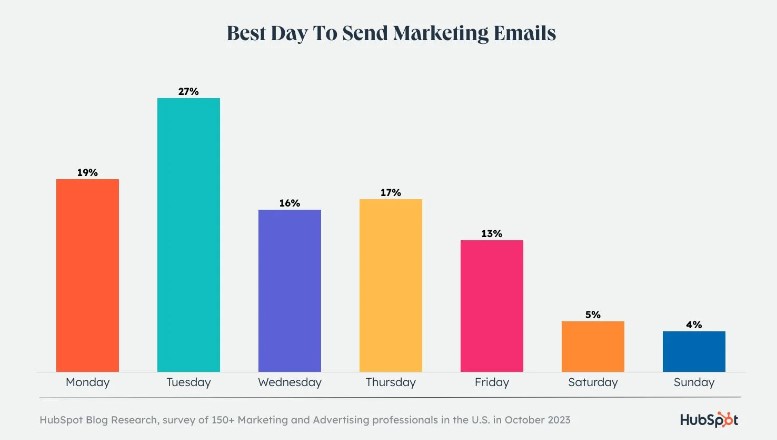
- Experiment with visual elements: You can also test the layout, image placement, or even the color of your CTA button. For example, using a bright orange CTA button versus a green one could lead to more clicks if the color contrast catches more attention.
7. Measure and Analyze Your Nonprofit Email Marketing Results Regularly
With limited resources, nonprofits must maximize their email marketing efforts. By tracking key metrics, you can optimize campaigns based on data rather than guesswork.
Key metrics to monitor include:
- Open Rate: Shows how many people opened your email. If it’s lower than the 28.59% nonprofit average, try improving subject lines or A/B testing send times.
- Click-Through Rate (CTR): Measures how many clicked on a link or CTA. With a 2.7% nonprofit average, improving CTA clarity and placement can boost results.
- Conversion Rate: This is the ultimate measure of success—whether your email recipients actually took the desired action, such as donating or signing up for an event. Conversion rates give you a clear picture of how effective your emails are at driving real results.
- Unsubscribe Rate: Tracks opt-outs after receiving emails. Keep this under 0.5% to ensure content is resonating and not sent too often.
Don’t just measure metrics for the sake of it—use the insights you gather to continually improve. You can also repurpose your email campaigns into SEO content to improve your website’s visibility.
By turning your well-researched email content into blog posts, case studies, or landing pages, you add more value and improve your site’s search engine ranking. This makes it easier for people to find and support your nonprofit cause.
Best Examples of Nonprofit Emails to Send
The most effective nonprofit email marketing has clear messaging, personalized content, and compelling calls to action that align with your mission. Here are five of the best types of nonprofit emails:
1. Impact/Storytelling Emails
These emails focus on telling the story of your nonprofit’s mission and the impact it’s having on the community. They create an emotional connection by sharing success stories, data, and real-life testimonials.
For instance, Charity: Water’s “Good News” email shares a compelling story about data collection and water insecurity, connecting donors to the cause on a personal level.

2. Milestone Celebration Emails
These emails celebrate the achievements of your supporters or your nonprofit’s progress. They are a great way to acknowledge contributions, build deeper connections, and inspire future involvement.
For example, the email from Donors Choose, congratulating a teacher on reaching the milestone of having 10 projects funded—shows how celebrating these accomplishments can motivate recipients to continue their engagement.

3. Event Invitation Emails
These emails are crafted to invite your supporters to attend a fundraising event, workshop, or special gathering.
For example, this email from Tributary, promoting a “Branding Intensive” for a nonprofit incubator program, is a great example of an event invitation email. It outlines clear qualifications, deadlines, and benefits, all while making the opportunity feel exciting and exclusive.

4. Onboarding/Support Emails
These emails are designed to assist users in getting started with your platform or program, offering guidance and tips for success.
The email example from RallyUp is a great representation of an onboarding or support email. It acknowledges that the recipient has started a new fundraiser and provides clear, actionable steps to help them move forward.
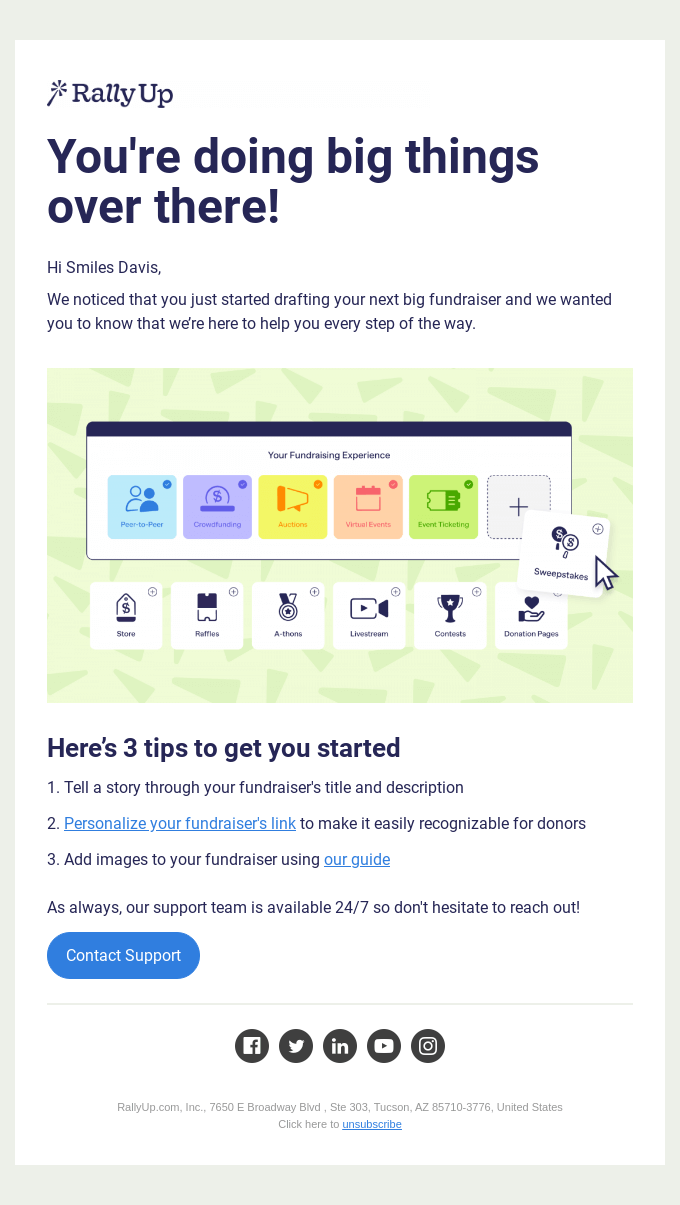
5. Donation Appeal Emails
Donation appeal emails are a direct and impactful way for nonprofits to request support from their audience. These emails clearly state the need for donations and outline how the funds will be used to make a difference.
For example, the email from Road Scholar titled “Five Ways Your Donation Will Change Lives” not only highlights the importance of the donor’s contribution but also provides a detailed breakdown of how their donation will help.

Ready to Elevate Your Nonprofit Email Marketing?
Email marketing remains one of the most effective tools for nonprofits to connect with their audience and drive meaningful change. Whether you’re sharing impactful stories, thanking donors, or organizing events, the right email marketing strategies can make a significant difference.
Ready to take your email marketing to the next level? Get started with Smaily today and see how its easy-to-use features and automation tools can help your nonprofit achieve its goals!
About the Author
Vanya is a content writer. She likes writing in various niches but has expertise in the SaaS and Marketing niche. At present she is helping SaaS businesses to improve their visibility through SEO optimised content. In her free time, she likes exploring ways to improve her writing skills.
